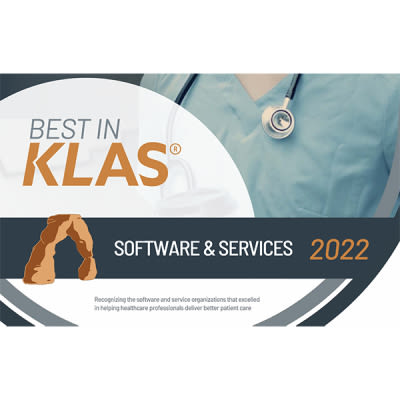A comprehensive study explored the role of EI in the shift towards value-based care, and evaluated the benefits of this platform. The study analysed how organisations can successfully integrate EI into their Electronic Health Record (EHR) strategy.
What is Enterprise Imaging?
Enterprise Imaging is a wide-ranging solution that manages all imaging across the entire organisation, including radiology, cardiology and all departments and services that use imaging in their workflows and devices. The aim of the EI platform is to provide increased value at clinical, operational and financial levels. A well-designed EI programme makes the most of technology to deliver a longitudinal imaging record at diagnostic and clinical (e.g. EHR) levels.
EI includes a range of traditional functionality such as PACS, CVIS and VNA, and tools required for image exchange and cooperation across the organisation, for example, Enterprise Viewers, Encounters-based Workflows, and Image Exchange platforms.
EI is neither an IT-only initiative nor a VNA storage consolidation and cannot be easily deconstructed. In an ideal situation, the EI platform provides flexibility so that an organisation can implement and expand into new clinical workflows over time as their needs change or resources permit.
What are the Benefits?
The benefits of a strategically sound EI rollout can be far-reaching: converging images and data across service lines and specialties as well as clinical workflows, business and IT resources, financial optimisation, and clinical and business intelligence.
In terms of clinical workflows, an effective EI platform should harmonise workflows across the organisation. The focus of care delivery should be on the patient, thus enabling information sharing, multi-disciplinary cooperation and patient engagement. Finally, it should also deliver measurable improvements for staff and patients.
EI can drive workflow consistency and efficiency at scale, thus eliminating redundancies, reduce manual workflows, increase productivity and improve communication across imaging specialties. All of this is possible because EI can provide a longitudinal view of patients’ full multi-specialty imaging timeline and journey.
A healthcare organisation’s business and IT objectives can suffer if systems are not integrated. Separate storage platforms, disparate infrastructure, conflicting interfacing protocols and requirements, and differing service and support models lead to increased costs, fragile integrations, and often require teams of dedicated resources to keep multiple systems running. EI can reduce technical complexity and cost by converging image collection, storage, management, and sharing into a highly scalable and centralised platform.
Flexible deployment models, such as virtual or cloud-hosted alternatives, can further simplify IT infrastructure and administration, which can improve reliability and performance system-wide.
System-wide inefficiencies, over-use or duplication of imaging services, missed reimbursements, and medico-legal risk exposure are challenges that negatively affect progress toward value-based care delivery and financial performance. EI can help organisations address these issues.
Reducing Cost
EI can help organisations reduce imaging total cost of ownership (TCO) by:
•Consolidating and reducing infrastructure requirements.
•Optimising storage utilisation by implementing lifecycle management (LCM) policies and leveraging lower-cost storage alternatives like tiered or cloud models.
•Simplifying integrations and reducing the cost and time associated with interface management
•Supporting encounter-based workflows to integrate point-of-care devices (e.g. POCUS) into standardised billing systems and workflows and reduce the impact of missed reimbursements.
•Standardising POCUS capture, storage and quality expectations to derive the long-term value of all medical images and help reduce unnecessary imaging.
•Anticipating health service demand and optimizing resource planning to reduce costs associated with over or under-staffing.
•Converging and streamlining IT and administrative tasks to reduce staffing and training costs.
•Unifying and facilitating hardening of enterprise-wide security and privacy controls to reduce the risk of costs associated with system breaches or HIPAA exposure.
How to Start
Once the decision has been taken to introduce enterprise imaging, these high-level points can be used as a guide.
Start by establishing an EI governance team that can align the objectives, budget, and resources with organisational and EHR objectives. Engage physicians and staff across departments and specialties to identify top priorities and build an EI roadmap that delivers value.
Establish a framework to measure key performance indicators that align with the organisation’s objectives and targeted improvement programmes. Find an EI platform that supports diverse imaging specialties, is scalable and performant with future growth objectives. Ensure that image sharing and collaboration are a top consideration for driving multi-disciplinary, patient-centric care across the care continuum. Choose an EI vendor with broad and diverse experience and is committed to a collaborative approach to address workflow, IT and business across the organisation.
Source: Agfa HealthCare
Latest Articles
Agfa, Workflow, Agfa Healthcare, enterprise imaging, value-based care
On the Road to Enterprise Imaging



















